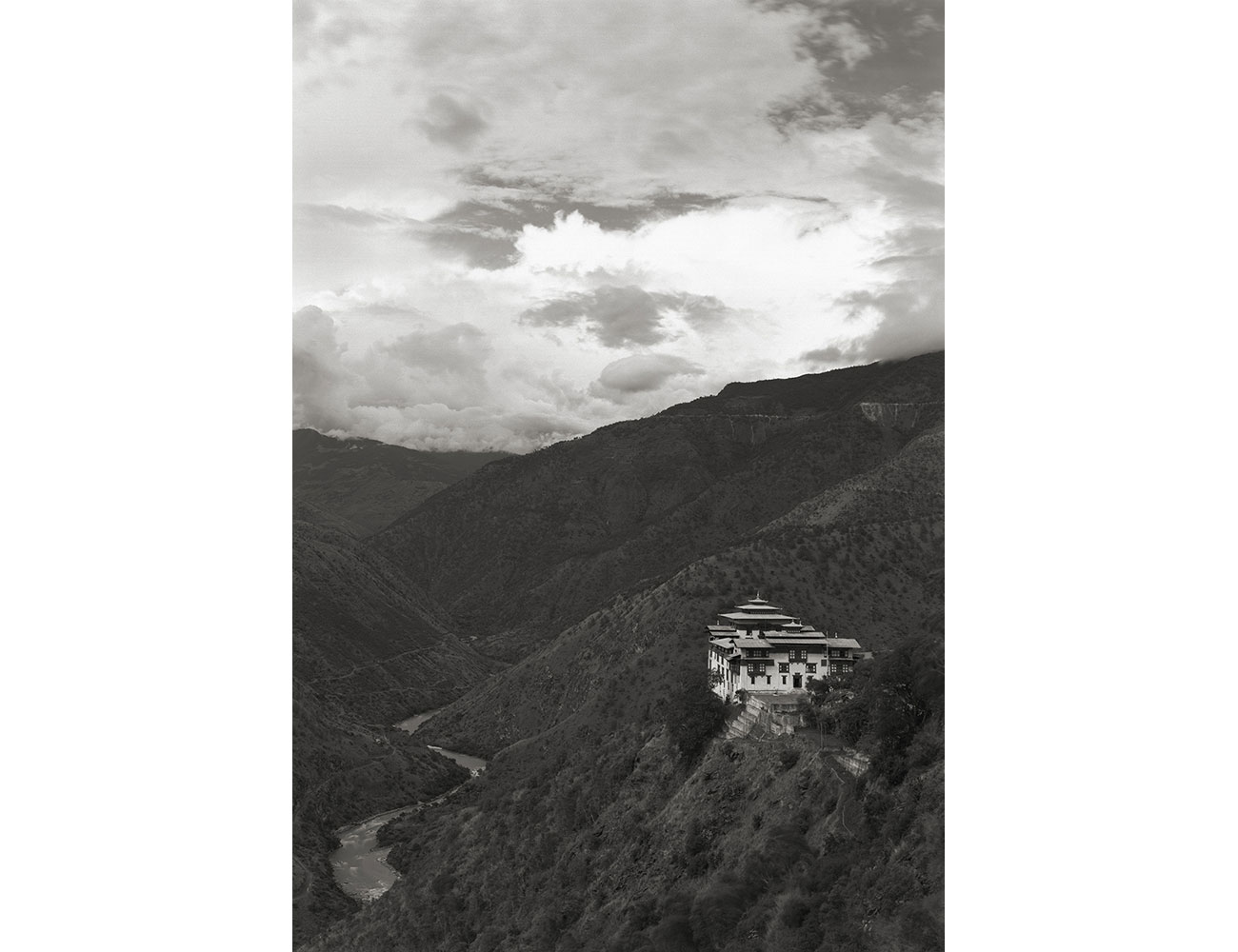
Bhutan Fantasy
Our jeep, once again, broke down.
While I wait for the driver struggling to repair the car, I fall into thoughts again, sit on grass on the hill, where it overlooks the Tongsa valley. The Tongsa Dzong faintly and briefly appears between flocks of clouds and fog. Bhutan is a small country of less than 700,000 people, at the edge of the Himalayan mountain range, between India and China.
A morning at Dochu-La Pass, the highest point on the road that runs from Palo to Thimphu, has been always blanketed in fog. One time en route, I saw masses of blossoming rhododendron emerging like apparitions from the mist, and I was lost in photographing that dream world. Other times, I’ve waited since dawn to photograph the small Stupa that stands at the crossing of the pass. White flags holding all sorts of prayers and people’s hopes stand like a forest along the road. Just when I think the mist is billowing away, they are swept away again in its tide. As the Stupa melted from sight, will there be something otherworldly taking shape?
Another morning, I was photographing the Jackar Dzone in Bumthang, known as “fortress of white bird”. On my way, I walked through the yards of houses in a village. A girl washing her hair in the stream, runs through their back yard. A ray of morning sun streaks through the smoke, rising from houses with breakfast cooking in their kitchen. Cows roar, chicken sing, a baby cries, in the distance. A patch of farm is covered with tiny white flowers of buckwheat, another patch filled with yellow flowers of mustard. A dewdrop on hanging moss from a Cypress branch reflects the morning sun and projects the world. I wondered what “sacred places” I have been looking for around the world.
Remembering the calm, selfless appearance of Thukshey Rinpoche seated in his house in a quiet Chumey valley, I was touched with the lack of self-consciousness of people whom I photographed in Bhutan these last few years. “Being myself, no more, no less” is what I have been trying all these years, but somehow many of Bhutanese seems possess this quality naturally.
Only a few crimes in Bhutan occur today or, rather, there are next to none by the western measurement. Schoolchildren walk as long as two hours each way, on the hilly road at altitudes of 9,000 feet, to their school, every day. A little boy dressed with their Kimono-like uniform, called Goh, merely five years olds, was led by a girl, only a few years older, also dressed in their traditional girl’s uniform, Kira.
We invited two little girls to be photographed in the flower field nearby, and they came into our car, without suspicion. Traveling many years, I have not yet seen a place as peaceful as Bhutan, or a place affecting such peacefulness within myself. If there is a place indeed named Utopia, this place may come to the closest to it.
The peaceful little kingdom of Bhutan is just about to dive into the ocean of the democracy, by conducting the first general election in their history. I only hope the blend of the democracy and the unique culture of Bhutan, with its idea of Gross National Happiness, is a harmonious one.
As I gaze at a Dzong and a surrounding village through the clouds, I start to wonder if this scene before my eyes is real or just an illusion? Or this trip of incredible peacefulness is an illusion itself? Or my life itself may be…
Seemingly, an existence of the precious culture in the edge of Himalayan itself is the fantasy of the 21st century, and I can’t help having a fear of its delicate fragility which may easily dissolve into surrounding enormous clouds and fogs. While I was rambling through my thoughts of previous trips of Bhutan, our plane started its descent, threading through mountains, and heading towards Paro airport. Summits of mountains are seen below eye level, at eye level, and then become above eye level, and I start looking at farmhouses on the mountainside so close. Our plane’s wings are swinging up and down, almost touching trees and farm houses. In the distance, there are shining snow-covered Himalayan peaks. When we see traditional architecture of Paro Dzong on my right side, which has become a familiar landmark, we are about to touch down to the land of Thunder Dragon for my sixth visit.
Kenro Izu, 2003
